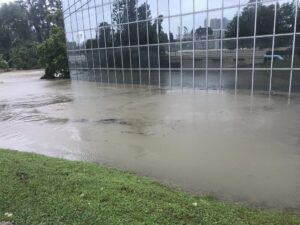
Storms are natural disasters that can cause significant damage to our homes and communities. They can leave a trail of destruction in their wake, leaving us with the task of cleaning up the mess. However, it’s important to know that storm damage cleanup is not as simple as just picking up debris and repairing damaged structures. There are certain do’s and don’ts to keep in mind to ensure your safety and the effectiveness of the cleanup process.
Do’s of Storm Damage Cleanup
Assess the damage: Before beginning the cleanup process, it’s important to assess the extent of the damage. This will help you determine the tools and resources you’ll need to complete the job. Additionally, it will help you identify any potential hazards that could pose a risk to your safety.
Wear protective gear: Storm damage cleanup can be dangerous, so it’s important to wear protective gear to minimize the risk of injury. This includes sturdy gloves, safety glasses, and a dust mask. Additionally, if you’re working with hazardous materials like mold or asbestos, you should wear a respirator to protect your lungs.
Remove standing water: If your home has suffered from flooding, it’s important to remove any standing water as soon as possible. Standing water can cause structural damage, mold growth, and other hazards. Use a wet/dry vacuum to remove the water, and ensure that the area is thoroughly dried out before beginning any repairs.
Contact your insurance company: If your home has suffered significant damage, it’s important to contact your insurance company as soon as possible. They can provide guidance on the cleanup process and help you file a claim to cover the cost of repairs.
Hire a professional: If the damage is extensive, it’s a good idea to hire a professional cleanup crew. They have the tools, equipment, and expertise to handle the job safely and effectively. Additionally, they can help you identify any hidden damage that may not be immediately visible.
Don’ts of Storm Damage Cleanup
Don’t enter a damaged building: If your home has suffered significant damage, it may not be safe to enter. Structural damage, electrical hazards, and other dangers could be present. Wait for professionals to assess the damage and determine if it’s safe to enter.
Don’t touch electrical wires: If you see downed power lines, don’t touch them under any circumstances. They could live and pose a serious risk of electrocution. Call your utility company or emergency services immediately.
Don’t attempt to remove hazardous materials: If you suspect that hazardous materials like mold or asbestos are present, don’t attempt to remove them yourself. These materials can be dangerous to handle and require special equipment and training to remove safely. Hire a professional remediation company to handle the job.
Don’t forget about safety: Safety should always be your top priority during storm damage cleanup. Take breaks as needed, stay hydrated, and ensure that you’re wearing the proper protective gear.
Don’t wait to begin cleanup: It’s important to begin the cleanup process as soon as possible to minimize the risk of further damage. Waiting too long can allow mold growth and other hazards to develop, making the cleanup process more difficult and expensive.
In conclusion, storm damage cleanup can be a challenging and dangerous task. However, by following these do’s and don’ts, you can ensure that the cleanup process is done safely and effectively. Remember to prioritize safety, wear protective gear, and don’t hesitate to contact a professional if needed.
Service Pro Restoration
2001 2nd St SW Rochester MN, 55902
507-229-5554
